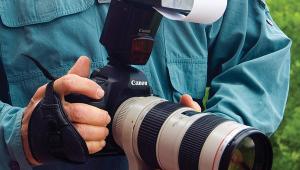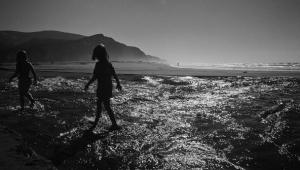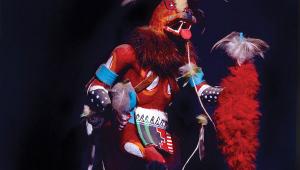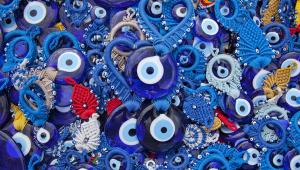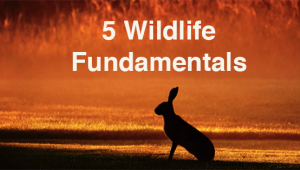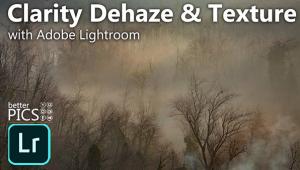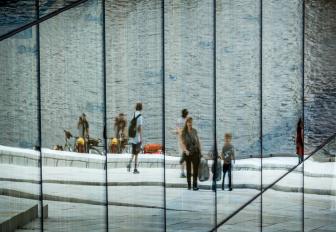Dealing With Inclement Weather: Making The Best Of Every Shooting Condition
Rain
Many photographers don’t consider the possibility of shooting in the rain, but I have done this on many, many occasions and been very happy with the results. As long as you protect the camera with an umbrella, or some kind of plastic covering (like a clear shower cap with an elastic band), you can shoot in the rain. I photographed the Chinese pavilion (#1) in a light rain, and the two second exposure attests to how dark it was. If you are shooting a non-moving subject, it doesn’t matter what the light level is as long as you have a tripod. Notice that with the long exposure, the falling rain disappeared and it looks as if there were no rain at all—except for the ripples on the water.

All Photos © Jim Zuckerman
I had similar conditions when I visited Paris in the spring. The light rain was mixed with fog and low clouds, and it turned out to be a fantastic photographic opportunity. The lights from the city reflected in the low clouds created a unique backdrop to famous architectural icons like the Eiffel Tower (#2). Without the glow from the sky, this picture would be like all the other night shots you’ve seen. The mood and the atmosphere make this unique and special. I was also able to capture great reflections in the wet pavement (#3). Pictures that include dry asphalt or concrete are often mundane, but as soon as the ground reflects illuminated architecture, the picture takes on a whole new feel.


Sometimes it rains too hard to shoot. Such was the case when I was shooting in Vermont during peak autumn color, and I was frustrated to say the least. As I sat in my car waiting for a break in the downpour, I noticed that the foliage of a maple tree in front of my parked car looked like an impressionistic painting. I decided to shoot it, and the result was one of my favorite images from the trip (#4). I couldn’t use a tripod as I sat in the driver’s seat, but instead of increasing the ISO to get a fast shutter speed, I decided to hand hold the camera at 1⁄15th of a second. This was taken in the 90’s before image stabilized lenses and cameras that could change ISO settings on the fly, so shooting with a slow shutter like this was a guarantee that the images would not be sharp. However, since the water running down the windshield created an abstraction of color and form, I reasoned that the slow shutter speed wouldn’t be a problem.

I’ve also photographed in the rain while on safari. Most photographers travel to East Africa in the dry season, and I did as well. Sometimes unexpected rainfall occurs, however, and I took advantage of it when I photographed a cheetah shaking off the rainwater (#5). I love the shot, and this could only have happened during a rain shower. I used my 500mm telephoto here, and the large lens hood protected the front glass element from the rain in this particular situation. For other lenses that have much smaller lens hoods, I always carry a microfiber cloth so I can dry the lens should it get raindrops on it. Smeared portions of an image from water drops are very difficult—and sometimes impossible—to repair in Photoshop.

Threatening weather also presents dynamic photographic conditions. The low clouds swirling around Bled Castle in Slovenia, is a good example (#6). The castle photographs very nicely when the sky is clear, but I feel that the powerful weather made the image a lot more interesting.

High Wind
Sometimes the wind can be so strong it makes photography very difficult. If you use a tripod, the wind can buffet the camera and tripod and introduce blur. Using a heavy weight suspended from the center column can help, although if the wind is strong enough even this won’t solve the problem. The only solution, really, is a fast shutter speed.
When I shoot out of airplanes, I often ask that the door be taken off for an unobstructed view. Small planes typically fly at 80-90 miles an hour, and the wind rushing past the open door is extremely strong. With the movement of the plane itself plus the onslaught of the wind, the only way to get sharp pictures is to use shutter speeds that are 1⁄500th of a second and faster. When I photographed the dunes on the Skeleton Coast of Namibia (#7), I used 1⁄800th at f/4 and ISO 200. Since depth of field isn’t relevant when everything is so far away (meaning everything will be in focus at any lens aperture), I opted to use a large aperture because that permitted the fast shutter to be used.

At the top of Haleakala on Maui, the winds can be ferocious in the winter. I photographed beautiful clouds at sunrise (#8) when the wind was probably 50-60 miles an hour. I tried using a tripod, but the force of the wind was too strong and I had no confidence that weighting my tripod down would stabilize it. Instead, I set it up next to my car and used the vehicle as a wind-block. That helped a lot, and as I took the picture I put a continuous downward pressure on the tripod-mounted camera to help minimize the effect of the wind.

If you love to do macro photography when you travel, forget about it if it’s windy. Even a slight breeze can make it impossible to get sharp pictures, but if the wind is strong there’s nothing you can do other than take pictures indoors.
Alternative Subjects
When the weather turns ugly and it’s not feasible to go out and shoot, there are always alternatives. Turn your attention to museums, the interiors of cathedrals, mosques, and other religious monuments, tombs, theater performances, and indoor market places. These things provide a wealth of material. In museums, for example, you can photograph priceless treasures like King Tut’s mask in Cairo (#9) and the wonderful artifacts on display in the museum at Ephesus in Turkey. One of the reasons I travel with my laptop is if the weather makes photography outside impossible, I can use Photoshop to work with my images until the weather improves. When I was in Turkey, I spent a couple of hours working on one of the famous statues in the Ephesus museum that were displayed against a plain indoor background (#10). The setting was fine for a museum, but photographically it was boring. Therefore, I created two variations of it. In the first one (#11), I used one of the pictures I’d taken in the ruins as a background, and in the second picture (#12). I combined the statue with storm clouds. You can see how dramatic and compelling a simple museum shot can become.


Another alternative is to photograph indoor performances. Depending on where you are in the world, you can usually find folk dancing, various forms of theater, children’s performances, and so on. In Indonesia, puppet shows are a unique form of entertainment and the whirling dervishes in Istanbul are always wonderful to photograph (#13). In China, cultural shows are fascinating to watch and great to photograph. See if you can get permission through a local guide to go backstage and photograph the performers getting ready for the show. I did this with a photo tour group and everyone loved the behind-the-scenes experience as much as the show itself (#14).


You can always satisfy your passion to be productive every day by shooting interiors. Religious architecture everywhere in the world is fantastic, like the ceiling detail in the Chora church in Istanbul (#15) or the cosmology plan in the tomb of Ramses VI in the Valley of the Kings at Luxor, Egypt (#16). Colorful indoor bazaars typical of the Middle East are great subjects as well (#17). These places are wonderful to shoot not only if it’s raining, but also if the heat of the day becomes unbearable.



When you move indoors, the lighting is significantly reduced, of course, and if you like to think outside the box, experiment with slow shutter speeds. In the Palace of Versailles in France (#18), the stunning Hall of Mirrors was too crowded to get a decent shot of the architecture. Therefore, I took advantage of all the colors people were wearing and took this picture at 1⁄4th of a second with a 16mm lens. It reminds me of an impressionistic painting done during the Renaissance.


